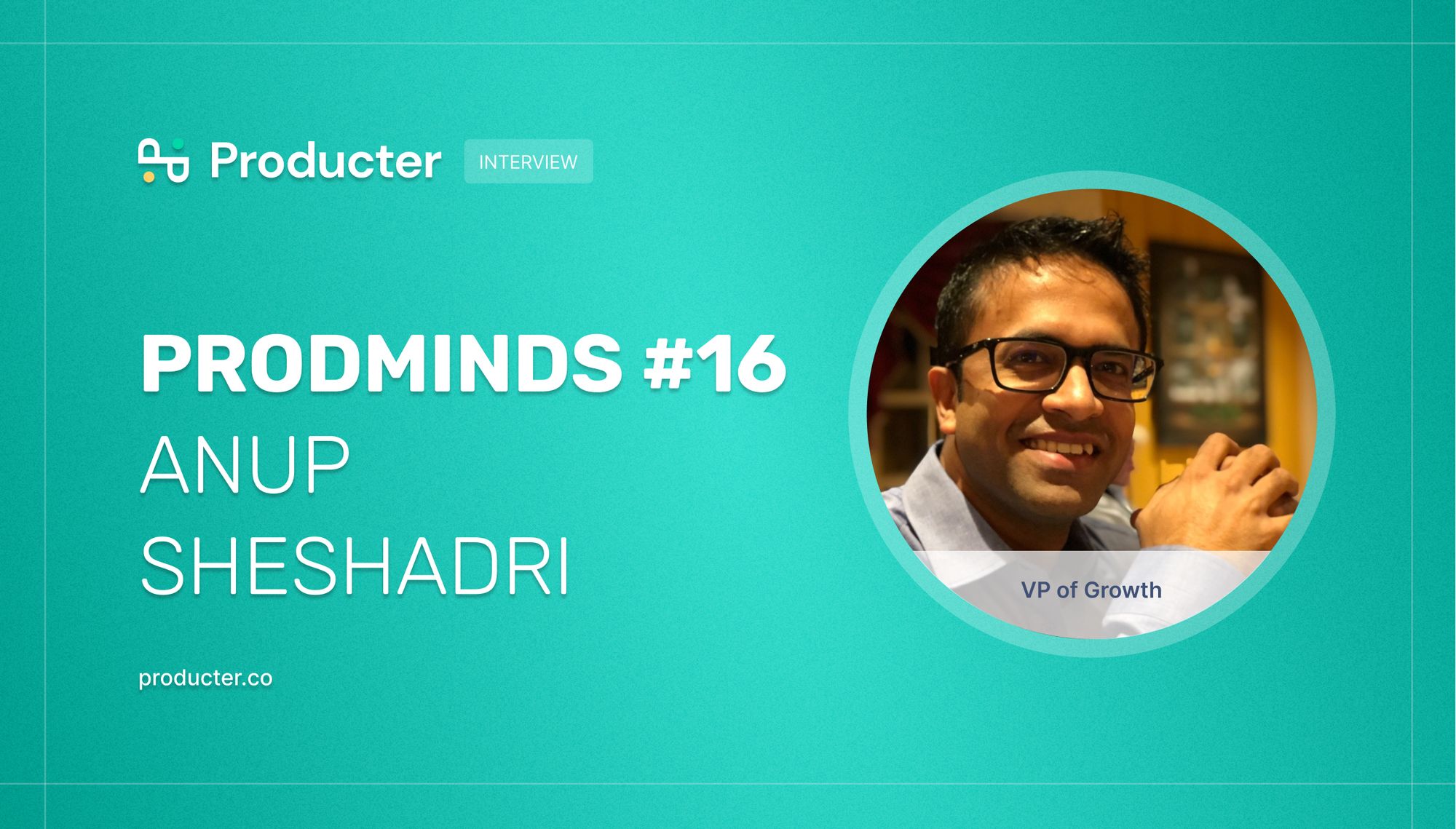Team Producter: Would you tell us a bit about you and your career path in product management?
Diana: I worked at a startup that was engineering-led. The product was used by marketers. The customers (marketers) didn’t understand the engineering terminology that appeared in the product. The engineers thought the customers simply needed to be trained. That wasn’t the case. Given the disconnect between the customer’s expectations and the product’s design, the product was never “sticky” enough. Customers found it too hard to use and simply stopped coming back despite training and appreciating the problem the product was supposed to solve. I wanted to understand the “why” behind the disconnect and received a degree in human-computer interaction. My first internship was as a UX Researcher in a Product team. I loved doing research, but I handed off my insights to the product managers who then worked with engineering and others. I wanted to do what the PMs did - to see my ideas through to release and work with all the various parties, so I pivoted into product management. Since then I’ve worked at small and large organizations. I’ve started teams from scratch, and inherited, and grown/scaled teams. I love the shift from outputs to outcomes and continue to guide product managers to be more empowered in their roles and leadership.
Team Producter: Which part of being a product manager is the most challenging for you?
Diana: Product partners who say they want a strategy and/or an empowered product organization but in reality simply want a plan, e.g. a list of what product is going to build and when we were going to build it. In such cases, executives want to feel certain about what the product is doing, so they can measure progress based on how much has been built.
Team: How do you think departmental silos affect product companies? In what ways do you build and maintain relationships with stakeholders from different teams?
Diana: I believe the product has the ability to break down departmental silos. I recommend including stakeholders early in the product development process. Opportunities for Discovery (problems to solve / jobs to be done) are informed based on input from Customer Success (and Sales when sales-led or hybrid). Then including one or two stakeholders from Customer Success, Engineering, and Marketing during Ideate, helps to expand and evaluate the ideas put forward during brainstorming. The small number of stakeholders also contribute to Validate when potential solutions are tested. They can help with establishing a customer advisory board, refining ideas, surveys, and customer + market research. Once Build begins, the stakeholder group increases when experimentation occurs, leading to Alpha and/or Beta testing taking place as Go to Market begins. As stakeholders have been involved earlier on, the context is already familiar and planning comes together collaboratively faster. Stakeholders use this context to help with Review / QA as well. Then the number of stakeholders increases again as the Release occurs. They remain involved as Monitor happens and continuous iterations (such as A/B testing) occur.
Please note the steps don’t change for an MVP. Instead, the transition through the stages simply happens faster.
Team: Even while users enter the product in a variety of ways, not all of them use it actively. which leads to fewer people buying products. What strategies do you employ to boost user activity?
Diana: Individuals often wonder if the approach changes for Product-Led vs Sales-Led. In actuality the approach is similar, what has changed is the priority:
- Sales Led: 1. Acquire 2. Monetize 3. Engage 4 Expand
- Product Led: 1. Acquire 2. Engage 3. Monetize 4 Expand
I like the EUREKA framework. The EUREKA framework is an acronym for each step in the process to improve user onboarding.
- Establish an onboarding team
- Understand the users’ desired outcome
- Refine your onboarding success milestones
- make user onboarding as easy as possible
- Evaluate the new users’ journey
- introduce delight for your users during their first visit
- Keep new users engaged
- marketing can really help here with a customer lifecycle (nurturing) program
- Apply the changes and repeat
- prioritize user needs and make the conversion to paid simple
- make it easy for users to interact with you, ask questions, and access your knowledge base
- Use your data to learn and improve as you go - continuous improvements are the name of the game
Team: Before introducing new features to the product, A/B testing is performed to gauge consumer reaction. What strategies do you employ to boost the truth of A/B testing?
Diana: Continuous discovery is very beneficial in product delivery. Being able to work and deliver in small batches is especially important as it allows the product to gather user feedback quickly. A/B testing is an example of such a technique. When comparing one attribute of an experience, such as different color treatments on a button, and maintaining everything else as equal, we’re doing A/B testing. If multiple variables are changed, you are doing multi-variant testing, not A/B.
A/B testing is one of the best ways to prove causation. The key, as noted above, is to limit the number of items being tested per experiment.
Also, keep in mind, you don’t need to A/B test everything. If low risk or the outcome is unlikely to change your approach, then you don’t necessarily need to run an A/B test. When it’s risky and harder to redact, running an A/B test is beneficial.
Producter is a product management tool designed to become customer-driven.
It helps you collect feedback, manage tasks, sharing product updates, creating product docs, and tracking roadmap.

You may also like:








